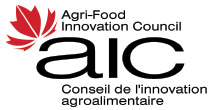It’s time to rewrite the book on research
Research has shaped modern agriculture in terms of the crop varieties that are grown and the farm practices of producers.
By Alex Binkley, Ontario Farmer
Once upon a time, good scientific research might have been seen as data in and new product out with a lot of laboratory work in-between.
It’s time to abandon that notion in favour of one where research includes the ongoing collaboration of potential users and customers as well as consideration of a variety of end uses for the final product or knowledge, says Sandra Schillo, an assistant professor at Telfer School of Management at the University of Ottawa.
A research project “has to be open to inputs throughout the process,” she said during a keynote address to the 2016 conference of the Agricultural Institute of Canada. “It has to reach both traditional and new markets and generate spin-off benefits.”
Research has shaped modern agriculture in terms of the crop varieties that are grown and the farm practices of producers, she noted. “This doesn’t happen automatically. Think up and down the food chain and all around it for ideas.”
Governments have long supported agriculture research because of the social benefits it has given society, she said. Generally government labs do basic research and the information gleaned from that work is used by university and private researchers to produce other innovations. Government labs should be working to maximize the public good and “no one should be excluded from the research or the results.”
One change that has to be understood is that a research project isn’t complete just because it generated new information or products. Now the project has to include dissemination of the knowledge gained to farmers and the food industry. As well, technology transfer to private companies can generate even more products.
She showed the delegates a graph of a research system which includes five groups – research organizations, support bodies, markets and consumers, enterprises and intermediary organizations – that all play a role in the research projects and the ongoing sharing of its findings. In turn, these participants are all motivated by market forces, technology developments, social triggers and environmental influences.
She advocates shifting to an open innovation approach in recognition of the complex and changing challenges within the agri-sector as it tries to produce more food sustainably with less impact on the environment. The collaboration required to make it effective is quite doable using the Internet and modern communications and allows the project to tap into expertise everywhere.
At the same time, a more open, collaborative research system doesn’t mean the results are free, she added. “You have to carefully manage the intellectual property flowing from the research.” Government research must be protected as much as possible to guard against misuse even if it’s openly available to other researchers.
She said the development of a national agriculture research policy undertaken by AIC will encourage informed decision making and bring more innovation to Canadian agriculture.
View the article here.
